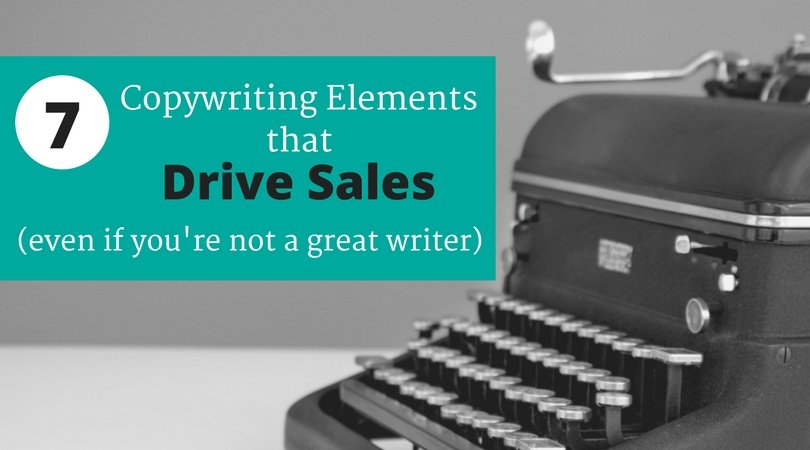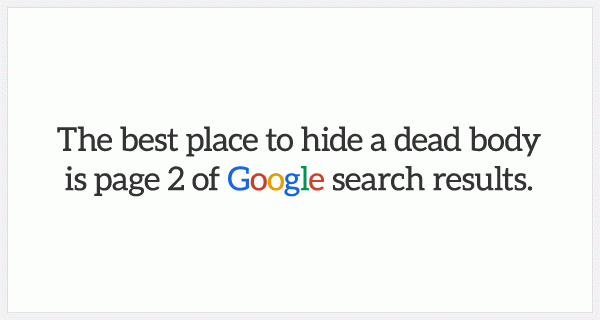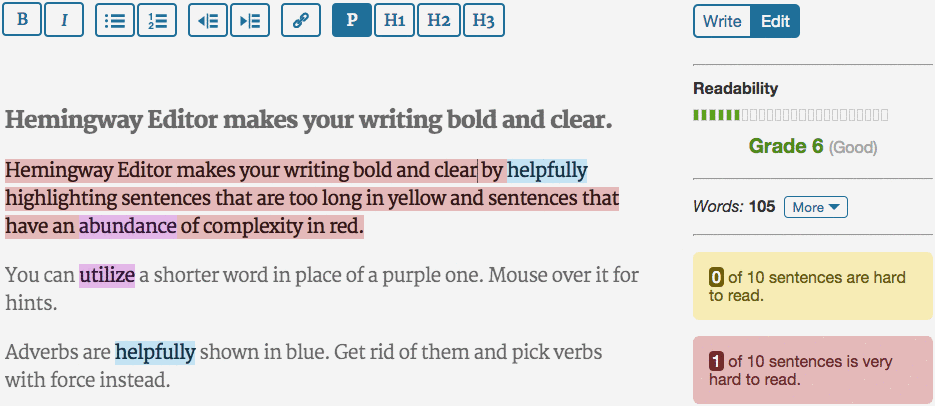By
No one is born knowing how to write great sales copy. Copywriting is a skill that can be learned – by anyone. So, if you have just started a business and you’re wondering how to write the words that will get people to buy your product, just know that you can learn copywriting elements that will drive sales.
I’m going to share with you seven copywriting techniques that the pros use. Before I do, though, I want to explain the difference between copywriting and content writing. They are often confused. And, while there is some overlap, and good copywriting is helpful in content marketing, it’s important to know the purpose of each.
Copywriting vs. Content Writing
Copywriting and content writing are both used as a way to connect with your audience online. But they have very different purposes.
Copywriting is writing the advertising or marketing copy that is intended to drive sales or drive a specific action. Common uses are in emails, landing pages, sales letters (or sales pages), and ads
Content writing is writing the content that is intended to entertain, educate or inform an audience online. Common uses are in blogs, eBooks, white papers, and informational web pages.
The two types of writing involve different skills and techniques. While it is possible to be great at both, a good copywriter is not necessarily a good content writer and vice versa. Incorporating elements of copywriting into your blog content will help your articles stand out, be read, and convert subscribers.
Great Copywriting Will Turn Your Idea Into a Successful Business
You have a product or service. It’s not a business until someone buys it. How do you get them to do that? Tell them a story, in words that produce an emotional connection. That story is told through your sales copy.
Words have the power to turn your idea into a successful business. Delivered to your audience at the right time and in the right format, impactful sales copy drives sales.
7 Copywriting Elements That Drive Sales
1. Know Exactly What You Are Selling
In his book, How to Write Copy That Sells: The Step-By-Step System for More Sales, to More Customers, More Often, Ray Edwards calls this knowing your Big Idea. Get so crystal clear on what you are selling that you can articulate the following in one sentence:
- who your product is for
- the problem it solves
- your product
- the benefits to your audience
Using our Simplified Search course as an example, here is our big idea statement: Any online business owner can understand and implement SEO best practices by using Simplified Search because it demystifies the search engine optimization process and teaches simple strategies anyone can use.
When you can state precisely what you are selling, who it’s for, the problem it solves, and the benefits to your target customers, it becomes easier to write your sales copy. To keep your copywriting on track, refer to your big idea statement often.
2. Know Your Audience
When you know who your audience is, how they think, what they need, and what they are passionate about, it makes it easy to talk to them like a friend. Friends always have their best interests in mind. You know their pains, and as a trusted friend you recommend only the best answer to their problems. When you write from that vantage point, your message will come through as authentic, honest, and persuasive.
3. Write Compelling Headlines
An effective headline stops readers in their tracks and draws them in. It gives the idea of what the article, email message, or offer is about, but it leaves just enough unsaid to make readers curious. But how do you take boring topics and create exciting headlines?
Effective headlines have one or more of these elements:
- Make a promise
- Elicit an emotional response or curiosity
- Appeal to your specific niche
- State a promise or proposition
- Establish credibility or authority
- Communicate benefits
4. Use Bullet Points
Bullet points synthesize ideas into small easy-to-digest bits. They make sales copy and web content easy to read. They tell the reader, “If you get nothing else out of this article, at least I’ve given you the best information right here.”
Bullet points are effective because people typically don’t read an entire article. They skim or scroll, looking for clues to what the article or page is about before they invest their precious time.
They look for headlines, subheadings, and bullet points to get to the heart of what they are about to read.
Bullet points are surrounded by white space, drawing the reader’s eye toward them like a magnet. They tell readers at a glance what the benefits are and why they should buy your product.
Again, I’ll refer you to Ray Edwards’ How to Write Copy That Sells. He offers templates for 21 types of bullet points and suggests that your sales copy include a mix of each type. Some bullet point types that you’ve undoubtedly seen in great copywriting include:
- The “wrong” bullet – stating a commonly held belief and stating that it’s wrong, followed up by stating that your special offer will explain why.
- The “themed sequence” bullet – listing pain points or stumbling blocks that are holding your reader back from achieving their goals. Or, listing hints about the solutions your product offers without going into details.
- The “reverse hook” bullet – states a fact such as a statistic that is impeding the reader’s success and then states how they can use that information to meet their goals. Often the latter part – the solution – is in parenthesis.
- The “truth about” bullet – states that you are going to tell the truth about something controversial and then states how you are going to shatter their beliefs.
- The “probing question” bullet – asks the reader questions about whether or not they know something.
5. Limit Your Reader’s Choices
A confused mind says “no.” When writing sales emails, landing pages, sales pages, and even blog articles, guide your readers toward conversion by limiting the possible actions. In sales emails, include links only to the landing page you want to direct them toward. Don’t include links to follow your blog or follow you on social media.
Landing pages by definition should contain no other places for the reader to click other than to opt in to your offer. Sales pages should only contain a button to buy your product or service and a “no thanks” option. In blog articles, it’s a little trickier because a blog page has many options to click. However, make the main call-to-action bold or in image form, so it draws the reader’s attention.
6. Risk Reversal
When you take the risk of purchasing your product off the shoulders of your buyer and assume all of the risk yourself, you eliminate most of their objections. People want to be guaranteed that they are making a good decision. A strong guarantee tells your buyers that you are so confident in your product that you are willing to pay them back (maybe even double their money back).
There are techniques for creating an irresistible guarantee. They include restating how the buyer is to use the product, the offer’s benefits, and what they can expect. Essentially, you continue to sell in the guarantee and then end with your risk reversal. An example is “Order my Simplified Search course, watch every module, download the worksheets, join my SEO community, and put the tactics into practice for 90 days. If it doesn’t improve your understanding of SEO, then I refuse to keep your money.”
7. Ask for the Sale
Never assume someone will buy just because you’ve laid out the offer, the benefits, and your guarantee. You have to ask them for the sale. Connect the dots for your reader.
You’ve told your story, you’ve laid out the product and its life-changing benefits, and you’ve assumed the risk. Now tell them to make a decision. Tell them you know where they are in their decision and the pain they feel by remaining in limbo. Then tell them how it will feel after they make the right decision to purchase your offer.
Examples of closing statements that drive sales:
- Make the decision now to get different results.
- I’m waiting to support you on the other side.
- It’s time to make a decision, what will you do?
- If you stay the same, nothing changes. Where could you be a year from now?
Put These Copywriting Tips to Use
Now you see how writing sales copy for your specific audience and addressing their pains is easier when you keep a few copywriting elements in mind. Grab their attention with curiosity-invoking headlines, use bullet points, limit their choices, offer a rock-solid guarantee, and ask for the sale. How will you use these tips in your copywriting? I encourage you to not only use them in future sales copy, but go back to your landing pages, emails, and sales pages and see how you can drive more sales with compelling copywriting.








